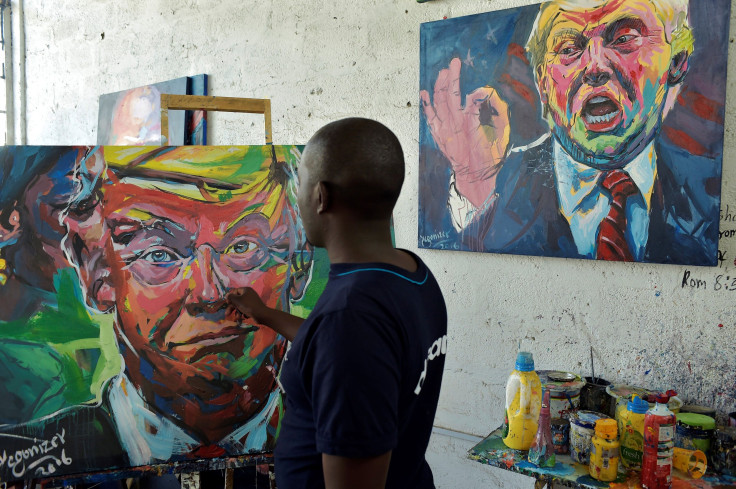$20,000 Trump Portrait Mystery Unsolved As President's Namesake Foundation Dissolves

New York Attorney General Barbara Underwood announced Tuesday that President Donald Trump had agreed to shut down his Donald J. Trump Foundation following allegations he used the foundation for personal and political gain, and amid a lawsuit against the organization.
According to the Washington Post, Underwood said her office had found “a shocking pattern of illegality involving the Trump Foundation — including unlawful coordination with the Trump presidential campaign, repeated and willful self-dealing, and much more” dating back to 1987. As part of an ongoing lawsuit, which was filed in June, her team would continue to seek more than $2.8 million in restitution from the Foundation.
Alan Futerfas, an attorney for the Trump Foundation, criticized Underwood, saying Trump had wanted to shut down his foundation in 2016, before he took office, but the attorney general’s office prohibited him from doing so, citing their investigation.
“The Foundation has been seeking to dissolve and distribute its remaining assets to worthwhile charitable causes since Donald J. Trump’s victory in the 2016 Presidential election,” Futerfas said. “Unfortunately, the NYAG sought to prevent dissolution for almost two years, thereby depriving those most in need” he said.
As the Trump Foundation shuts down, the mystery of a portrait of Trump, which he had purchased for $20,000 in 2007, remains unsolved. The portrait in question was six feet in height and painted by “speed painter” Michael Israel in just five to six minutes at a charity gala at Trump’s Mar-a-Lago Club in Palm Beach, Florida.
When the painter auctioned the portrait, Trump won the bid for the painting at $10,000. Israel then convinced the-then business mogul to double the bid, half of which went to a charity called HomeSafe (called Children's Place at Home Safe at the time), which helps children and families harmed by domestic violence.
The controversy regarding the painting started when it was disclosed Trump paid for the portrait using his foundation’s money instead of from his own pocket. There were also rumors he hung the painting in one of his personal properties, which was illegal, according to tax experts who spoke to the Post. The law against “self-dealing” dictates that charity owners cannot use funds from their nonprofit foundations to purchase things for personal collection.
Although Trump listed the portrait as an asset on his charity’s IRS forms in 2017, assigning it a revised value of only $700, he never revealed the whereabouts of the painting — information that remains unknown till this day. The painting was valued at $0 in the foundation’s 2018 tax form.
The painting was brought up by former President Barack Obama during a campaign rally for former Democratic presidential candidate Hillary Clinton in 2016, when he countered Trump’s repeated attacks against the Clinton Foundation.
“You want to debate foundations and charities?” Obama said. “One candidate’s family foundation has saved countless lives around the world. The other candidate’s foundation took money other people gave to his charity and then bought a six-foot-tall painting of himself.”
As part of the agreement reached for his dissolution, the Trump Foundation will sell its remaining assets, which include a Denver Broncos football helmet signed by former quarterback Tim Tebow, and two large portraits of Trump, bought by the president for a combined price of $42,000 and paid for with charity money. The revised combined value for all three items was listed at $975, a 98 percent reduction.
© Copyright IBTimes 2025. All rights reserved.





















